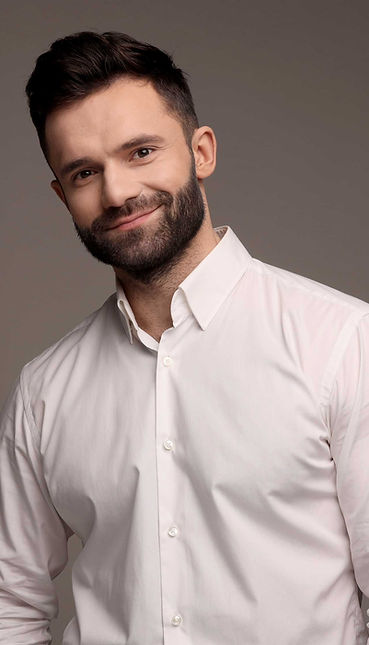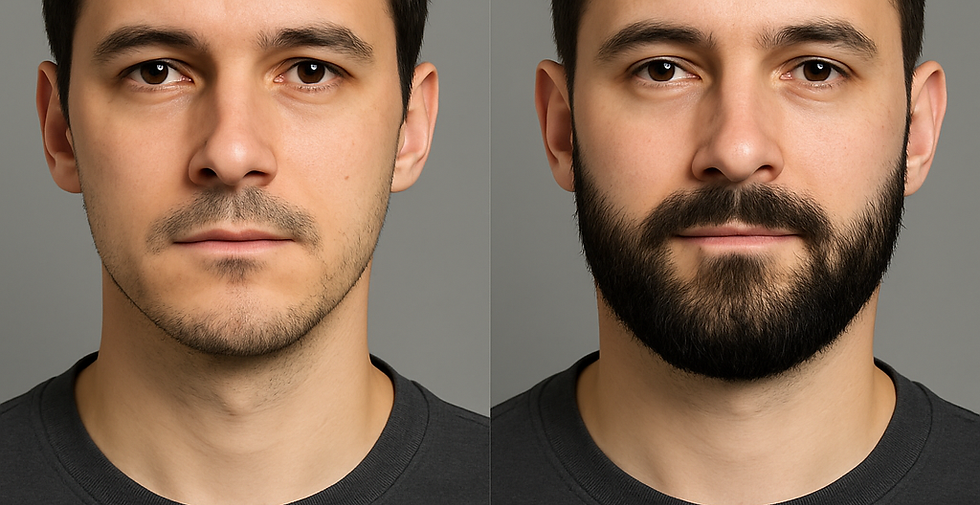
Sakal Ekimi Nedir?
Sakal ekimi, doğal ve daha gür yüz kıllarının uzamasını desteklemek için sağlıklı kıl köklerinin sakal bölgesine transfer edildiği kozmetik bir işlemdir. Seyrek sakalları, kel noktaları veya ince saçları olan erkekler, daha yoğun ve daha düzgün bir sakal elde etmek için bu işlemi tercih edebilirler. İşlem genellikle, donör bölgeden tek tek kıl köklerinin çıkarılıp istenen sakal bölgesine dikkatlice ekildiği Foliküler Ünite Ekstraksiyonu (FUE) kullanılarak gerçekleştirilir. Sakal ekimi, alopesi veya yara izi gibi yüz kıllarının uzamasıyla ilgili hem kozmetik hem de tıbbi sorunları giderebilir.
Sakal Ekimi: Kapsamlı Bir Rehber
Sakal ekimi, seyrek, seyrelmiş veya hiç sakal çıkmayan erkeklerde yüz kıllarını geri kazandırmak için tasarlanmış cerrahi bir işlemdir. Bu işlem, genellikle kafa derisinin arka veya yan taraflarından alınan donör bölgeden alınan kıl köklerinin, seyrek veya hiç sakal çıkmayan bölgelere nakledilmesini içerir. Sakal ekimi hem görünümü hem de özgüveni iyileştirebilir ve yüz kıllarını güçlendirmek isteyenlere kalıcı bir çözüm sunar.

Sakal Ekimi İşlemi
Sakal ekimi süreci, ilk konsültasyondan ameliyat sonrası bakıma kadar birçok önemli aşamadan oluşur. Her adım, hasta için mümkün olan en iyi sonucun sağlanması açısından kritik öneme sahiptir.
Ameliyat Öncesi Süreç
Ameliyat öncesi aşama, cerrahla yapılacak ilk görüşmeyle başlar. Bu görüşme sırasında cerrah, hastanın sakal uzama düzenini değerlendirecek, beklentileri görüşecek ve hastanın sakal ekimi için uygun bir aday olup olmadığını belirleyecektir. Doktor, donör saçın mevcudiyeti, hastanın cilt tipi ve sakal bölgesinin durumu gibi faktörleri değerlendirecektir. Kapsamlı bir muayenenin ardından cerrah, genellikle FUE olmak üzere en uygun tekniği önerecek ve hastanın işlem hedeflerini görüşecektir.

Ameliyat yöntemine karar verildikten sonra, cerrah işleme hazırlanmak için özel talimatlar verecektir. Hastalara ameliyattan birkaç hafta önce aspirin gibi kan sulandırıcı ilaçları kullanmayı bırakmaları tavsiye edilecektir. Ayrıca, iyileşme sürecini etkileyebileceği için sigara ve alkolden de uzak durulması önerilir. Ameliyat günü, hastaların kliniğe temiz bir cilt ile gelmeleri istenecek ve ağrısız bir deneyim sağlamak için anestezi uygulanacaktır.
Ameliyat Sırasında
Sakal ekimi operasyonu, ekilen greft sayısına bağlı olarak genellikle birkaç saat sürer. İşlem sırasında, genellikle saçların en kalın ve incelmeye en dirençli olduğu kafa derisindeki donör bölgeden tek tek saç kökleri alınır. Bu kökler dikkatlice hazırlanır ve sakal bölgesinde açılan küçük kesilere nakledilir.
Cerrah, gerçekçi ve gür bir sakal görünümü sağlamak için saç köklerini doğal saç büyümesini taklit ederek doğru açılara yerleştirmek için titizlikle çalışır. İşlem son derece hassastır ve ekim sırasında köklerin zarar görmesini önlemek için uzmanlık gerektirir.

Ameliyat Sonrası
İşlemden sonra, hastaların uygun iyileşmeyi sağlamak ve ekilen saçların uzamasını desteklemek için özel bakım talimatlarına uymaları gerekecektir. Ekimden sonraki ilk birkaç gün boyunca hastalar ekim bölgesine dokunmaktan ve yoğun fiziksel aktivite veya doğrudan güneş ışığına maruz kalma gibi cilde travmaya neden olabilecek aktivitelerden kaçınmalıdır. Ekim yapılan saçların birkaç hafta boyunca tıraş edilmesi veya düzeltilmesinden kaçınılması önemlidir. Ekim bölgesinde şişlik veya kızarıklık yaygındır ve genellikle birkaç gün içinde geçer. Hastalar ayrıca enfeksiyonu önlemek ve iyileşmeyi desteklemek için reçeteli ilaçları da kullanmalıdır.

İlk birkaç hafta boyunca, ekilen saçlar doğal saç büyüme döngüsünün bir parçası olarak dökülebilir, ancak yaklaşık üç ila altı ay sonra ekilen bölgede yeni saçlar çıkmaya başlamalıdır. Sakal ekiminin tam sonuçlarının ortaya çıkması, saç köklerinin yerleşip daha kalın ve güçlü saçlar çıkarmaya başlamasıyla bir yıla kadar sürebilir.
Beard Hair Transplant in Turkey – Istanbul Touch
Beard transplants are becoming one of the most requested cosmetic procedures for men worldwide. Many patients ask how do beard transplants work or how does a beard transplant work. At Istanbul Touch, we specialize in natural, permanent results that enhance facial hair density and shape.
How Beard Transplants Work
A beard hair transplant involves taking healthy hair follicles (usually from the scalp) and implanting them into the beard area. Each graft is placed carefully to match the natural growth pattern.
-
Techniques: FUE (Follicular Unit Extraction) is most common.
-
Session time: 4–6 hours depending on graft number.
-
Anesthesia: local with sedation.
-
Recovery: return to daily life in 2–3 days, full growth visible in months.
This explains how do beard transplants work in practice and why results look natural.
Cost of Beard Transplants
One of the most common questions is how much does a beard transplant cost or simply how much is a beard transplant.
-
Average cost worldwide: $3,000–10,000
-
Beard transplant cost Turkey: usually $2,000–4,000
-
Prices vary based on graft number, surgeon expertise, and clinic standards.
Many patients also search for beard hair transplant cost, beard transplant price, or beard implants cost. Turkey offers excellent value compared to Europe or the U.S.
Why Choose Turkey for Beard Transplants?
-
International reputation for natural results.
-
Experienced surgeons performing thousands of beard transplants yearly.
-
Affordable pricing compared to beard transplant near me in the U.S. or Europe.
-
Growing interest such as French man beard transplant Turkey and celebrity beard transplants.
-
Results: Before and After
Seeing results helps set expectations. Explore:
-
Beard transplant before after
-
Before after beard transplant
-
Beard transplant before and after pictures
-
Beard transplant before and after photos
-
Beard implants before and after
Final results develop over 6–12 months, as transplanted hair grows naturally.
Risks and Considerations
As with any procedure, there are possible risks. Some patients research beard transplant gone wrong or botched beard transplant.
Risks include:
-
Temporary redness or swelling
-
Patchy growth (usually corrected with touch-ups)
-
Rare infection if aftercare is ignored
Choosing a qualified surgeon minimizes these risks and ensures consistent results.
Special Cases & Global Interest
-
Celebrity cases: media often highlight beard transplant celebrity stories.
-
Online communities: beard transplant reddit discussions share experiences.
-
Doctor selection: always choose a specialist (doctor beard) with strong credentials.
-
FAQ – Common Questions
How much is a beard transplant?
Costs vary, but in Turkey it ranges from $2,000–4,000.
How much does a beard transplant cost?
In the U.S. or Europe, average costs reach $6,000–10,000.
How do beard transplants work?
Healthy follicles are moved from the scalp to the beard using FUE.
How does a beard transplant work?
Grafts are placed individually to mimic natural growth.
How much is a beard transplant in Turkey?
Generally more affordable than Western countries, with similar or better results.
Start Your Beard Transformation
A full beard is a symbol of confidence and masculinity. Whether you want to fill patchy areas or create a stronger jawline, Istanbul Touch can help.
Book Your Free Beard Transplant Consultation
Get Your Personalized Quote Today
Start Your Beard Transformation in Istanbul

Çözüm
Sakal ekimi, yüz kıllarını iyileştirmek isteyen erkekler için kalıcı ve doğal bir çözüm sunar. İster seyrek sakalınızı güçlendirmek, ister yara izi veya kellikten sonra saçınızı eski haline getirmek isteyin, bu işlem tatmin edici ve kalıcı sonuçlar sağlayabilir. Uygun bir aday olup olmadığınızı belirlemek ve ideal sakalınıza kavuşmak için en iyi yaklaşımı görüşmek üzere uzman bir cerrahla görüşmeniz şarttır.
